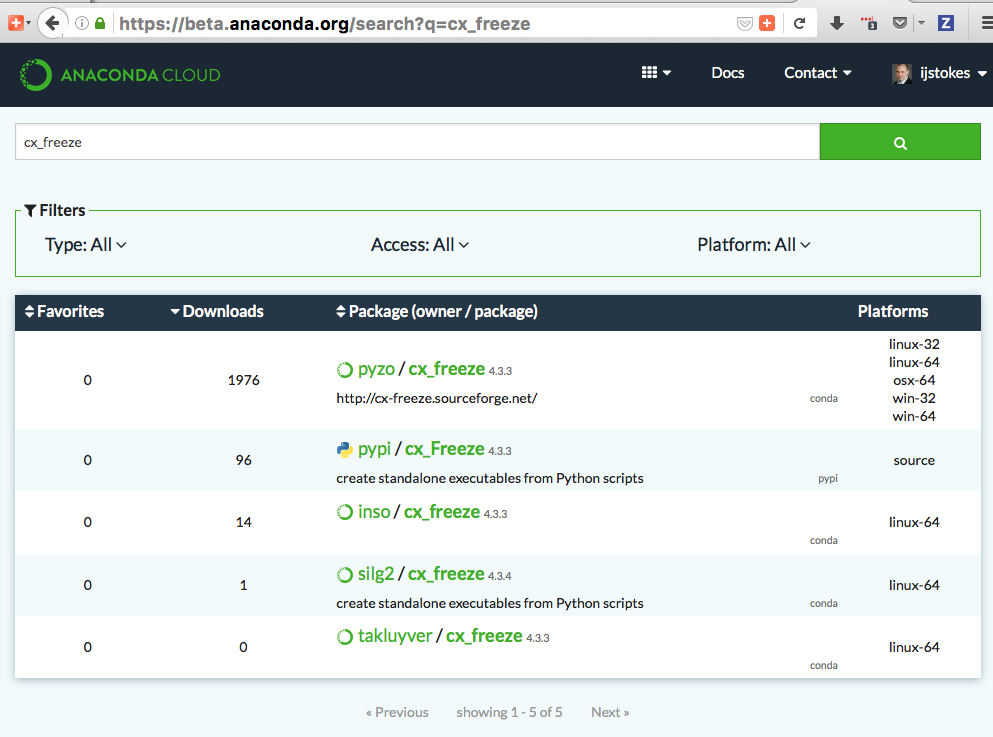



Make sure the bin folder from your anaconda installation is before /usr/lib (depending on how you did install pip). Pip: /home/borja/anaconda3/envs/test/bin/pip /home/borja/anaconda3/bin/pip When your shell resolves the call to pip, which is the first bin it will find? (test)$ whereis pip || (echo "$ERROR_MSG" & return 2)ĭepends on how did you configure your PATH environmental variable.

& echo "$ERROR_MSG" & return 1ĮRROR_MSG='Pip not installed in current conda environment.'ĮRROR_MSG="$ERROR_MSG\nUse \`conda install pip\`"ĮRROR_MSG="$ERROR_MSG to install pip in current conda environment." To ensure using the pip installed inside conda environment without having to type the lengthy /home/username/anaconda/envs/env_name/bin/pip, I wrote a shell function: # Using pip to install packages inside conda environments.ĮRROR_MSG="$ERROR_MSG\nUse \`source activate ENV\`"ĮRROR_MSG="$ERROR_MSG to enter a conda environment." Then the only pip you got is the system pip, which will install packages globally.īus as you can see in this issue, even if you did either of the procedure mentioned above, the behavior of pip inside conda environment is still kind of undefined. If you didn't add pip when creating conda environment conda create -n env_name pipĪnd also didn't install pip inside the environment source activate env_name Instead, it asks python to find its version of pip and use that version to install a package. In contrast, the python -m pip construction does not use the shortcut that the pip command points to. For one reason or another these two commands can become unsynchronized, so that your 'default' pip is in a different folder than your default python, and therefore is associated with a different version of python. Similarly, the command python references a specific python file ( which -a python tells you which one). The command pip references a specific pip file/shortcut ( which -a pip tells you which one). This installs the package to the anaconda library directory rather than to the library directory associated with (the non-anaconda) pip Pip install, you can use the module flag -m with python so that it uses the anaconda python for the installation python -m pip install If you have a non-conda pip as your default pip but conda python is your default python (as below) >which -a pip Now, I always run unset PYTHONPATH when using a conda environment, and it works much better. The system seems to always look in the PYTHONPATH locations even when you're using a conda environment. What I have found is that the conda env doesn't play well with the PYTHONPATH. Output of which -a pip: /usr/local/bin/pip Just a note, I know you can use conda install for the packages, but I have had an issue with Pillow from anaconda, so I wanted to get it from pip, and since the docs say that is fine. So it seems the environment is not working correctly, definitely not like it said in the docs. So I can see it thinks the requirement is satisfied from the system-wide package. Requirement already satisfied (use -upgrade to upgrade): Pillow in /Library/Python/2.7/site-packages Problem is coming up, when I try to install a package using pip: (shrink_venv): pip install Pillow I then can see in the terminal that I am working in my env (shrink_venv). I created an empty environment in Ananconda like this: conda create -n shrink_venv It is done the same way as for virtualenv.Īctivate the environment where you want to put the program, then pip install a program. In the Anaconda docs it says this is perfectly fine. I'm trying to figure out the best way to have a properly setup package within my environemt that allows me to keep developing and reflect new changes.I am trying to install packages from pip to a fresh environment (virtual) created using anaconda. Once you install conda-build, conda comes in with a command called conda develop which is supposed to do the exact same thing I describe above, but according to what I read it has not seen any development lately.
CONDA INSTALL PACKAGE IN ENV HOW TO
The thing is that I'm new to packaging and I'm a bit lost on how to create setup.py containing all the information of my conda environment(dependencies, name, etc.). I would like to install my existing project as a package in development mode within my conda environment by running python setup.py develop. Prefix: /home/user/miniconda3/envs/bookassignment Hello I have a conda environment that contains the following: name: bookassignment


 0 kommentar(er)
0 kommentar(er)
